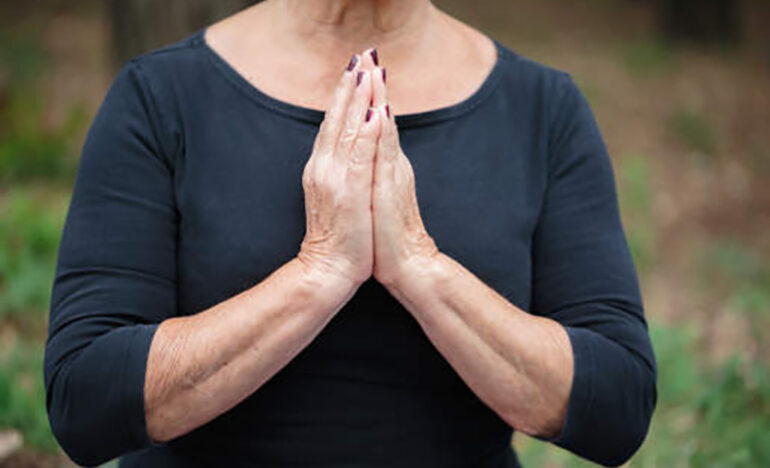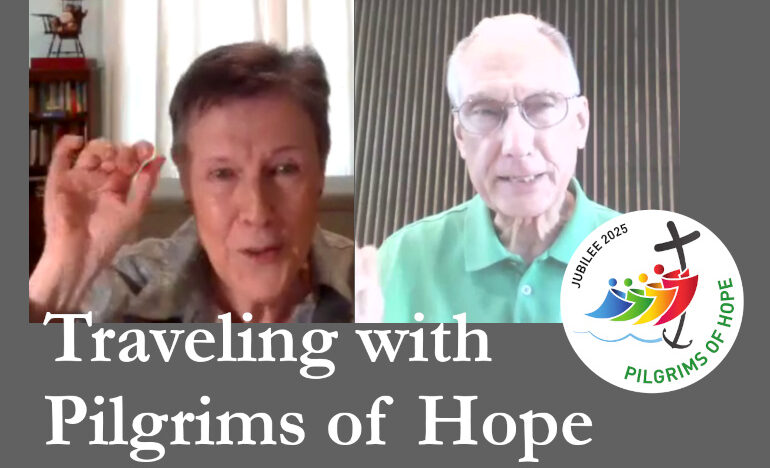Contemplation: Communion with the Divine

By Kathy Keary
This is Part 1 of a 4 Part series. Read all the articles here.
The word, “contemplation,” means different things to different people. In this series of four articles, I am referring to contemplation as a deep loving communion with the divine. It is a resting and simply being in God.
Contemplation is pure gift. We cannot manufacture it; however, we can plant the seeds and fertile the soil opening our hearts to receive this sacred treasure. The practice of centering prayer can lead to this interior state where contemplation is a welcomed guest.
Contemplation is a deep loving communion with the divine. It is a resting and simply being in God.
Centering prayer stems from the 14th century classic, The Cloud of Unknowing. It is rooted in the teachings of Jesus and his resurrected presence within us. As you may recall, Jesus instructed his apostles to go to their inner room to pray in secret. (See Matthew 6:6) That inner room is the recesses of our hearts. This is what contemplation is. It is communing with the indwelling presence of the Sacred One. You may have heard it referred to as “divine union.”
I highly recommend the book, The Path of Centering Prayer: Deepening Your Experience of God by David Frenette. It’s an excellent resource for both the novice and the experienced practitioner of centering prayer. “As you practice the path of centering prayer,” Frenette explains, “your experience of God deepens. God is not just a transcendent truth outside you, but a living reality within you, a mystery, a hidden ground from which everything in life is born, in every moment of time.”
Thomas Keating, Basil Pennington, and William Menninger, Cistercian priests, developed the following guidelines for Centering Prayer which are outlined in Keating’s book, Open Mind Open Heart, another highly recommended resource:
- Select a sacred word which expresses your intent to be open to the presence of God within you.
- Sit up straight in a comfortable position with eyes closed or lowered. Introduce your sacred word as a way to consent to God’s presence and action within you.
- When you find yourself attached to a thought, gently return to the sacred word to once again consent to the divine presence and action within you.
- At the conclusion of your prayer time, remain in this position in silence for a couple of minutes.
The sacred word is not sacred because of its meaning but because it expresses the practitioner’s intention to be open to the divine presence. It is recommended that the word be simple and no more than two syllables. It could be a word that expresses your action such as stillness, deep, open, within, presence, or silence. It could be a word that you use for the divine such as: God, Jesus, Spirit, or Sacred. Allow the Spirit to guide your selection.
When you realize that you have become attached to a thought, a feeling, a sensation, an image, or a reflection, gently return to your sacred word as a means to refocus on your intent of resting in God. Keating explains:
The sacred word is a way of letting go of all thoughts. This makes it possible for your spiritual faculties, which are attracted to interior silence, to move spontaneously in that direction. Such a movement does not require effort. It only requires the willingness to let go of our ordinary preoccupations.
It’s important to not beat yourself up because of distractions. That’s the way we are wired. Incessant distractions are commonly referred to as “monkey mind,” which is quite human. When you realize that you are attached to a thought, gently return to your sacred word even if that thought is of a spiritual nature. You may find that eventually your distractions will diminish over time.
I typically place my hands palms down on my lap. Some people prefer to place their palms up as a symbol of receptivity. Some keep their hands folded symbolizing their intent to commune with the Sacred One. The best way is whatever is comfortable for you.
I typically place my hands palms down on my lap. Some prefer to their palms up as a symbol of receptivity. Some keep their hands folded symbolizing their intent to commune with the Sacred.
The guidelines for centering prayer recommend a prayer time of twenty to thirty minutes. It may be difficult to begin your practice for this length of time. You may want to begin for a few minutes and work your way up.
Guidelines also recommend that the practice of centering prayer be undertaken twice per day. I personally engage in centering prayer once a day and have reaped great spiritual benefit from it. I believe that any time spent in silence with the intent to commune with God is time well spent on the spiritual journey. While I admire those who adhere strictly to practicing centering prayer twice per day, I hate to think that someone would be discouraged from this practice if they are unable or are not moved to pray in this manner twice a day for twenty or thirty minutes. I also firmly believe that the best guide for our personal spiritual life is the Holy Spirit. Rely on the Spirit to direct your path.
Come on back and read all four parts of this series. Our next article, which will explore alternatives to the sacred word. Our third article will delve into the transition from centering prayer to pure contemplation. We will discuss the impact of contemplation in everyday life in the fourth and final article.
Note: New articles in this series will be posted to the website every Monday and Wednesday. The full series can be found here: An Invitation to Something New: The Contemplative Life. On Thursday’s we’ll send an email to remind you of the articles
[Kathy Keary, a Precious Blood Companion and spiritual director, holds a master’s degree in theological studies and is a graduate of the Atchison Benedictine’s Sophia Center’s Souljourners Program, an intense study of spirituality and spiritual direction. Kathy believes that the divine is present and active in all of life and encourages others to be awakened to the God in all including the divine within. She enjoys accompanying others on their journey to wholeness discovering the person they were created to be.]
Image above is © Andrii Klemenchenko | Dreamstime.com
Related

Pilgrims of Hope, Episode 6: Walking with Cancer Survivors
Hosted by Fr. Ron Will, C.PP.S.
We are talking with people who find hope amid difficult circumstances or bring hope to others. In this episode, Kathy Keary talks about how centering prayer, journaling and other spiritual practices helped her cope with two life threatening health issues.

The Rollercoaster Torture
An Assembling God’s Puzzle video
By Fr. Garry Richmeier, C.PP.S.
Life is full of ups and downs, like a roller coaster, and that fact is a piece of life’s puzzle that we must deal with. Depending on how we deal with it, it can be torture, or it can be simply another difficult aspect of life to be navigated. How do we avoid the torture?
Categories
Assembling God's Puzzle Coffee with Padre Cooking & Spirituality Encounters of the 4th Kind Family Matters Reflections on the Eucharsitic Prayers Spiritual Resources Taize Prayers The Contemplative Life Traveling with Pilgrims of Hope Uncategorized Videos Week of Prayer for Uhristian Unity When you need a little help
